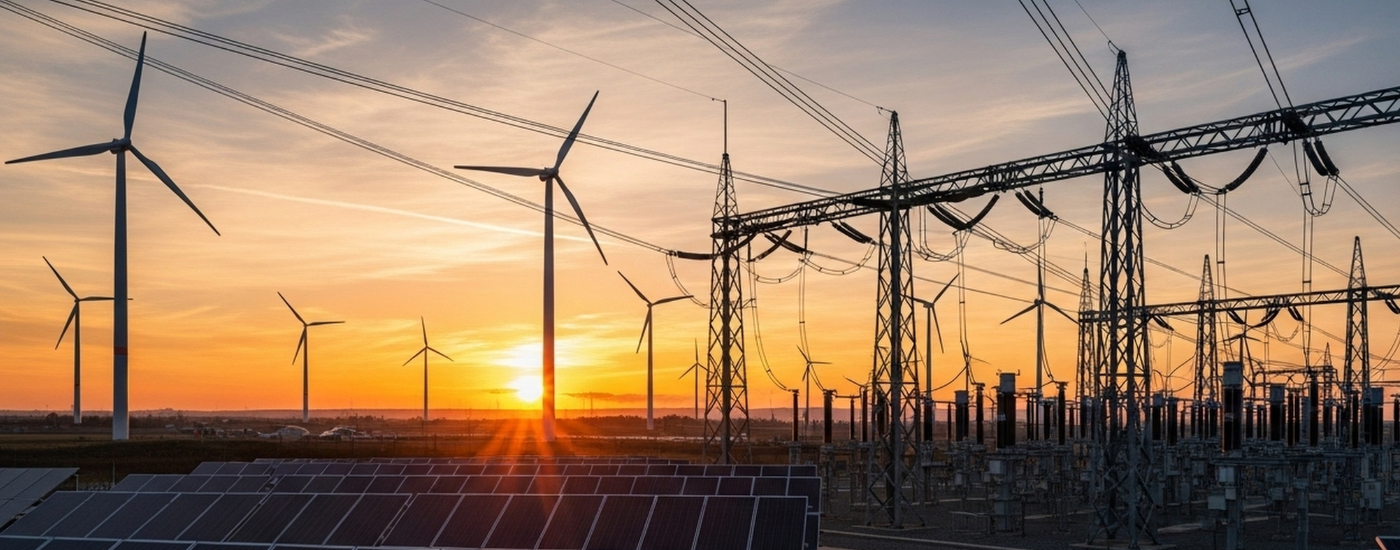The latest summary edition of our monthly Australian energy & environmental market update is now available. Keep reading for energy and carbon pricing movements, policy updates and other news.

This month we cover energy and environmental market movements, the re-launch of the State Electricity Commission in Victoria, the winners of the 250MW hydrogen tender in South Australia, and the approval of Brookfield's takeover of Origin Energy.
Keep reading for an overview of key market developments and a discussion of the impact of these announcements.
The full version of the update, with additional commentary from our industry analysts, is available to paid subscribers. Contact our team to find out more.



The Victorian Government has officially re-entered the private utility market, launching the State Electricity Commission (SEC).
The Victorian Government has re-launched the State Electricity Commission (SEC), looking to invest in renewable energy generation and storage technologies.
The SEC was the sole agency for the state's power generation, transmission and distribution for most of the 1900s.
Under the guidance of the SEC Expert Advisory Panel, the SEC will look to invest $1 billion in 4.5GW of new renewable generation and storage capacity. 2.6 of the 4.5GW will be invested by 2028.
The advisory panel outlined three priorities for the SEC:
The funds will mostly be aimed at investment in onshore generation and 2–4-hour storage.
The SEC is yet to announce their pioneer investment; however they have received over 100 Registrations of Interest (ROIs), combining 24GW of generation and 30GW of storage capacity.

The South Australian Government has announced ATCO and BOC Linde as preferred partners for the world's largest 250MW Hydrogen Electrolyser and 200MW Hydrogen Gas Generator.
The SA Government has announced winners of its green hydrogen tender, naming ATCO and BOC Linde as the ‘preferred partners.’
The projects, which will be built in Whyalla, will be the world's largest hydrogen electrolyser and hydrogen gas generator (at 250MW and 200MW respectively).
The Hydrogen Jobs plan, which allocated $593 million in state funding, also includes a 3,600-tonne hydrogen storage facility, equivalent to two months of production. SA infrastructure company EPIC Energy is the preferred developer of the storage facility and associated pipeline.
The project will be owned and operated by the state, aimed at reducing volatility and suppressing wholesale energy prices in SA. The combined electrolyser, gas generator and storage facility are anticipated to be online by Q1 2026.
The SA hydrogen production site allows for SA to decarbonize the hard-to-abate industries, such as production of green steel and green iron.

AEMO officially launched the “Very Fast” 1 second Raise and Lower markets on the 9th of October.
On the 9th of October, AEMO opened the Very Fast FCAS service market.
Due to the decreasing inertia in the system as large synchronous generators leave the NEM, there is a need for the frequency to be adjusted on a smaller time scale.
The Very Fast FCAS market incentivizes participants on a 1 second basis to either:
There were 9 participants in the first 11 days of operation, most of which were grid scale batteries and C&I aggregators (that only participate in the Raise market, by switching off demand).
Prices in the Lower market were much higher (between $0-140/MWh) than the Raise Market (generally steady around $20/MWh).
The cap for each participant was quickly increased from 50MW to 100MW in the Lower market due to higher availability but remains at 50MW for the Raise market.

The increase in renewable energy penetration coupled with the warmer weather and lower demand were the key drivers in the increase of negative energy price periods seen in October. While this is largely seasonal, we can expect scenarios like this to be, overall, more frequent as the renewable energy transition progresses.
Corporate energy buyers need to actively factor-in periods of negative pricing into their energy contract structure and negotiations. This starts with a setting an energy that’s based on a sound understanding of current and forecast market dynamics.
In the Australian carbon market, the spot ACCU price remained relatively steady in the month of October. This may be, at least in part, due to delayed demand from Safeguard Mechanism participants who are yet to enter the market.
Our transactions and advisory teams, however, are seeing a heightened activity in deals made on the primary carbon market, through structures such as long-term carbon offtake agreements for example. Like power purchase agreements (PPAs), in a carbon offtake agreement the buyer agrees to purchase set volume of credits, at set price points, for multiple years into the future.
If your business has a defined carbon exposure a carbon offtake agreement is a contract mechanism that should be considered as part of your ongoing strategy.
The events outlined in this month's update highlight the evolving nature of carbon and energy markets and the complexity of the net zero transition.
To discuss your unique requirements, get in touch with our team today for a no obligation discussion on how we can help.
Australian Energy & Environmental Market Update for October 2023

As the NEM Review lands, attention rightly turns to system-level settings. But much of the commercial change shaping renewable and firming supply is already unfolding inside over-the-counter (OTC) energy markets. This article sets out what’s already shifting commercially in a market under review.

As the NEM Review lands, attention rightly turns to system-level settings. But much of the commercial change shaping renewable and firming supply is already unfolding inside over-the-counter (OTC) energy markets. This article sets out what’s already shifting commercially in a market under review.